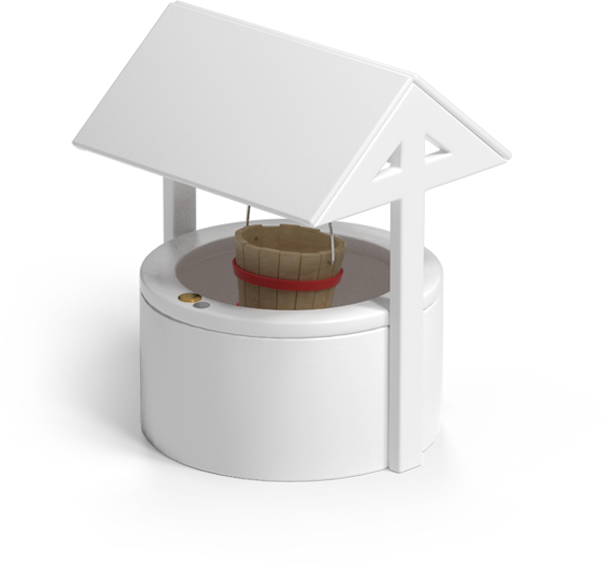How Has The Student Rental Market Changed In The Past 10 Years?
The student rental market has undergone a huge transformation in the past 10 years, more so than at any other time. Here we look at what's changed.
By Jon Howe9/22/22

One of the biggest reasons why the student rental market is so popular with investors, is because it is long-established and hence is very predictable. Because of the cyclical nature of the academic year, a landlord knows when demand will be high and when they need to have housing stock available. They also know that there will definitely be no shortage of demand and they also know in what locations that demand will need to be met by supply. Traditional student areas in different regions do not tend to change and nor does the fact that students want fixed term lets and a certain standard of accommodation. All this has been the case for many years and hence provides a steady, reliable and predictable market for a buy-to-let investor. But over the last ten years the market has begun to change and different challenges and opportunities now face the typical student rental market investor.
In terms of types of accommodation, students have typically had a pretty straightforward choice. In the first year, most students are offered a room in a halls of residence; private accommodation managed by the university or other institution. If you aren’t offered one of those you need to search for a house of multiple occupation (HMO); in theory, this could be any style of property, but traditionally, the most popular HMOs are large Victorian properties divided into a shared house. Here, students will have their own private bedroom and will share living areas such as bathrooms and kitchens, but not always living rooms, because the landlord often chooses to maximise their income and make a living room another bedroom. In their second year, all students would need to find HMO accommodation.
The attraction of HMOs for student landlords is that they will be relatively cheap to buy due to location and age, and while there will be costs to refurbish the property so it is suitable for separate student lets, fixtures and fittings don’t need to be hi-spec to match a student’s needs or expectations. You can then watch the money come in via four, five or even six tenants, knowing that at the end of the year you will very easily be able to replace them with another set of students.
The rise of purpose-built student accommodation
In the 21st century, the image of the typical student has evolved. Many people would resort to stereotype and describe students as lazy, penniless and unhygienic, and while this has always been something of a sweeping generalisation, it has gradually applied to fewer and fewer of the typical student demographic as time has gone on. Over the years students have all eventually come to own mobile phones, they would have their own laptops or tablets, they are more likely to own a car, and they might also become more diligent about their work and their lifestyle. Of course, students will always enjoy letting their hair down, but at the same time they are more aware of the opportunities a good education will provide for them. Perhaps this is due to the enormously escalating cost of higher education, and the fact that parents insist on their children taking university life seriously to justify the outlay and the inevitable debt.
As a result, student expectations have shifted and the rise of purpose-built student accommodation (PBSAs) has started to change the student rental market considerably. PBSAs are blocks of accommodation dedicated to students and built as new and to a higher standard than students had previously been presented with. Some PBSAs are built by institutions, and some are built by private developers. Market experts expect this split to be 50/50 in the coming years.
PBSAs are usually high-rise flats designed as ‘cluster flats’ whereby a set of rooms congregate around separate living areas, much like an HMO but all on one floor and built and fitted-out to a much higher standard. Furthermore, PBSAs usually have attached facilities, such as car parking, security and laundry, and may even have leisure facilities such as a gym, a cinema room or a games room. Most PBSAs are now built in the outer reaches of city centres, making them hugely attractive to students who enjoy being near nightlife and other attractions, and they are often still convenient for access to university campuses or at least transport routes to them.
Because PBSAs are purpose-built, fittings such as bathrooms and kitchens are of a much-better standard, and today students need their tech to be first class, so TV systems, WiFi, security and temperature controls will all be state-of-the-art. This signals a shift in expectations for students in 2022, and also shows how students are more aware of public safety and the environment and take other more basic issues such as hygiene and healthy living more seriously.
Who are PBSAs most attractive to?
PBSAs are typically marketed towards first-year students. The traditional on-campus halls of residence are now few and far between and most institutions have their own PBSAs which they can allocate to incoming students who don’t know the city and, living away from home for the first time, need safe, secure, convenient and high-standard accommodation. This issue becomes even more pressing when you consider international students. The number of students arriving from overseas to study in the UK has risen 14% in the last 15 years, and PBSAs hold a huge attraction for them, not only for convenience but also because payment is usually made as one fixed cost. This will cover rent, bills and facilities charges and means the international student doesn’t have the additional hassle of juggling lots of different payments.
Although PBSAs satisfy some elements of demand, the developments they are presented as can be slow to materialise, in terms of planning and construction. Many big cities are undergoing a vast transformation as PBSAs attempt to satisfy demand, but it is a slow process. However, PBSAs represent a stable income for property investors, even if most schemes are much bigger than a small investor looking at one buy-to-let property for a nest-egg income would want to get involved in.
Property developers have been helped in recent years by local authorities putting Article 4 Directions in place to limit how many HMOs can be built or re-purposed in certain areas. This is a response to a perceived lack of family homes and is designed to prevent private landlords from creating HMOs to take advantage of the student market. In some cases this will be in response to individual areas changing in demographic and gaining an unwanted reputation as a student area and all the public nuisance, damage and ancillary issues that might bring. And of course this plays right into the hands of property developers looking to build PBSA schemes in popular university towns and cities.
Where is there big demand for PBSAs?
According to Knight Frank’s 2018/19 report on student housing some cities with the biggest student populations in the UK, and where there is big demand for new PBSAs, are finding that supply is surprisingly well below demand, perhaps because there is less development land available. In Liverpool, Newcastle and Leeds there is high demand for PBSAs and fortunately, in these cities, there is plenty of development space and currently, there are several PBSAs schemes ongoing or recently completed.
In Cardiff, Plymouth and Aberdeen there are lots of ongoing PBSA developments but not too much demand in terms of student numbers, while in Manchester, Birmingham and Edinburgh there is the opposite problem; high demand but low development. In most major cities in the UK, however, any high-rise development which is ongoing is likely to be an office block or a PBSA, and the fact that it is difficult for the casual observer to identify a difference between high-end office space and student accommodation until the building is finished and opened, perhaps says as much as anything else about how the student rental market has changed in the last decade.
How the student rental market responded to the pandemic
Like every sector of the marketplace, the student rental market suffered badly in the pandemic, as students stayed at home to study online, or took a year-out with universities not running courses at all and deferring their annual intake. However, the universities were always going to respond well to the pandemic because the hunger for higher education was always there and wouldn’t disappear after just one fallow year. As a result, the student rental market has proved itself to be one of the most resilient out there, with the pandemic showing itself as merely a short term blip.
Student applications for the academic year starting in October 2021 were up 11.6% and £2.54billion was invested in PBSA developments in the UK in the year up to November 2021. Both domestic and international students returned to campuses promptly in 2021 and there was a very swift return to normality. Add to this predications that the number of 18-year-olds will increase by 160,000 over the next decade, an increase of 2% per annum, and the fact that the average PBSA development offers 400 individual beds, and it is easy to see the attraction of PBSAs to the property developer.
Fundamentally, PBSAs are now a well-established market and students’ expectations have risen accordingly. PBSAs can offer good rental yield %s for investors and the regular income stream means they represent a very liquid asset where cash is easily accessible. Furthermore, while the property developer is not immune to the current inflation rises and the cost of living crisis, they can offset this problem by increasing rental charges. It sounds pretty brutal, but students will expect this.
Other recent changes to the student rental market
The eye-watering levels of student debt that have developed over the last few years from tuition fee hikes, accommodation and the cost of living, have put pressure on the Government to respond, at least in terms of providing more affordable housing. Changes in the landlord sector have also meant the image of the traditional student landlord is moving away from them being unscrupulous and inflexible. Affordability is a big factor now, particularly with the current cost of living crisis to consider also, and Housing Hand are one association who work with accommodation partners to enable students to pay rent in instalments to make it more affordable.
You would expect this to provide a welcome boost for HMOs, but instead there is pressure to provide mid-priced PBSA accommodation and this is an area of the market that could offer big investment opportunities in the coming years.
This more lenient and considerate approach to students is also evident in the supply of specific types of PBSAs. These are responding to student’s needs, diverse wants and lifestyle changes and hence some PBSAs are alcohol-free, have quiet rules and behaviour boundaries, you can also apply for same-sex accommodation. These are responding to safety and security concerns and perhaps also appeal to international students particularly. This type of PBSA can be found mainly in accommodation offered by universities themselves rather than the private sector, and hence this is a demand issue that private developers could see as an opportunity.
Another potentially very big change in the student rental market is the Renters Reform Bill, which has caused some controversy in the sector. This is due to ban fix term tenancies and move to periodic tenancies. This means that student landlords won’t be able to match a student property to the usual cycle of the academic calendar, i.e. they have always prepared and had student properties available at the beginning of each student year, and let them for the full academic year, but now they can’t guarantee that a property will be available in September, when a student would normally wish to move into it.
This has caused deep consternation for private landlords with HMOs, particularly because PBSAs are exempt from the bill, and hence private landlords are seeing less attraction in HMOs and the students are also suffering, because there is less small and more affordable accommodation on the market. A good mix of accommodation is always good for the market, and the Renters Reform Bill is seen as killing this off by very clearly and almost exclusively diverting students to PBSAs.
The future of the student rental market
The rise in the popularity of PBSAs has been well-received both by property investors and the student market; after all, a higher class of living has to be a good thing, but at the same time it needs to be affordable, or at least there needs to a good mix of affordable options out there. This is why ‘some’ HMO stock needs to be retained and why mid-priced PBSAs are a variation to the market which we should see emerge strongly in the next few years. As always, there will be regional variations which alter supply and demand based on student populations, the quality of cities and universities and the state of the economy, but as is normally the case, the outlook for investors looking to get into the student rental market remains good.
Take a look at our other articles




